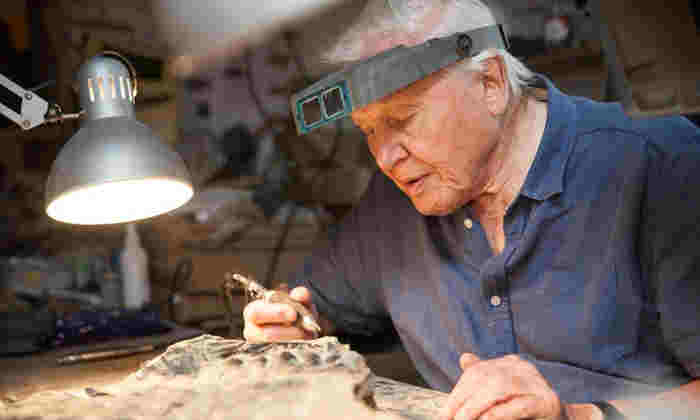University palaeontologist helps Attenborough reveal secrets of the Sea Dragon
16 Jan 2018
Dean Lomax helps piece together the science behind a tantalising prehistoric ‘murder mystery’

University palaeontologist Dean Lomax has helped piece together the science behind a tantalising prehistoric ‘murder mystery’, told in BBC 1’s Attenborough and the Sea Dragon.
The new, one-off documentary presented by Sir David Attenborough tells the story of a newly discovered ichthyosaur from the Dorset coast, England.
The word “Sea Dragon” refers to two extinct types of reptiles, ichthyosaurs and plesiosaurs, first brought to the attention of the scientific world in the early 19th century, and described and named in 1821.
Dean, a visiting scientist here at Manchester, worked as part of the documentary’s research team. He says: “In 2016, I was in contact with somebody at the BBC regarding a possible new one-off documentary on ichthyosaurs, presented by Sir David Attenborough. David has a bit of a soft-spot for ichthyosaurs, you see.
“Excited probably doesn’t quite capture what I was feeling, given that ichthyosaurs have pretty much been my life for ten or so years and I grew up watching Attenborough documentaries. Anyway, the idea was based around a new ichthyosaur discovery in Dorset.
“I had actually already been aware of this discovery (in early 2016), as I am long-time friends with the collector, an excellent chap called Chris Moore. I met Chris when I was about 17 years old. He is one of the best fossil collectors I have ever met. He just has a gift when it comes to finding new or rare fossils. For example, one ichthyosaur specimen he found back in January, 1995, turned out to be a new species. It was named Leptonectes moorei, in honour of Chris. He has certainly got an eye for recognising something rare.
“The documentary thus focuses on telling the life story of Chris’ 2016 ichthyosaur specimen. From how it lived, what it would have looked like, to ultimately how it died. Several of my colleagues, including Emily Rayfield, Ben Moon, and Fiann Smithwick (all from the University of Bristol) were on hand to help piece together this 200m-year-old puzzle.”
To watch the programme, visit:
And to read Dean’s story, visit:
